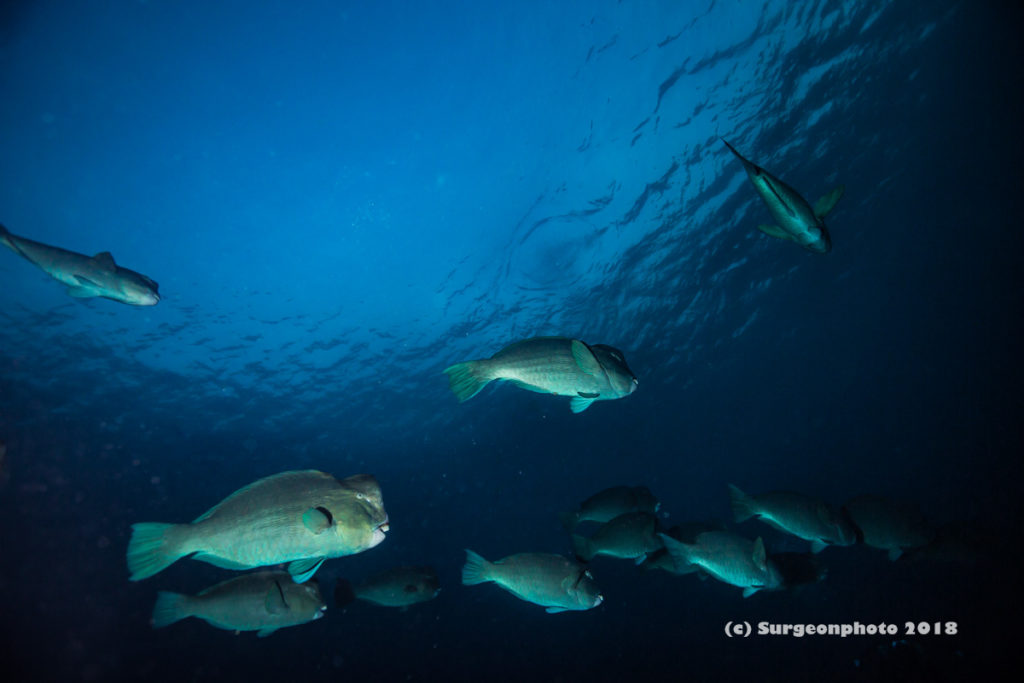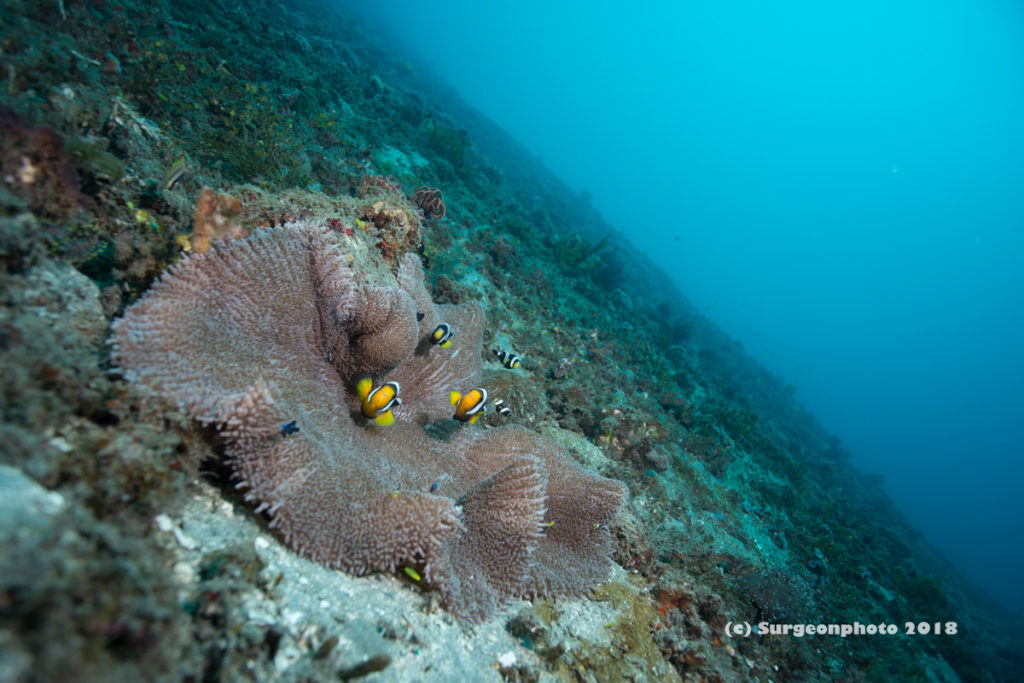Day 6: USAT Liberty, Tulamben
After the second night at Tulamben, I woke up before dawn. Today is the main event on diving in Tulamben, The wreck ship of USAT Liberty. School of humphead parrotfish will be expected at the site soon after the dawn, and I had to enter the site before the sun light reached underwater.
Liberty was a United States Army cargo ship, launched on 19 June 1918 and had served in the United States Navy in World War I and World War II. In 1942, she was torpedoed by a Japanese submarine southwest of the Lombok Strait, while she was en route from Australia to Philippines, carrying a cargo of railway parts. Liberty did not sank, and US destroyer and Dutch destroyer took the damaged ship in tow attempting to reach a port at Singaraja. But she took too much water and was beached at coast of Tulamben to salvage the cargo. Singaraja was a town with the Dutch port and administrative center for the Lesser Sunda Islands. Liberty was slipped off the beach due to an earthquake associated with an eruption of Mount Agung in 1963, and had sunk completely underwater.
The Liberty wreck has become the most popular diving site in Tulamben, is gathering lots of fish and covered with beautiful soft corals. One of the most must-see features at the site is the march of humphead parrotfish which stays in the wreck during night and wakes up in the early morning.
hunmhead parrotfish grows to a length of 1.2 meters, largest in parrotfish family. It has a bulbous forehead, exposed teeth to eat corals and unique body shape. They have a habit of sleeping in a group in shallow sea. They swim off shore after they wake up early in the morning and come back to near shore and sleep in gaps of rocks at drop off. Here in Tulamben, Libery plays the same role of the rocks.
There are not many places where we can aim to meet the school of humpheads. In Asia Pacific, Sipadan Island, Malaysia, Palau and here, Tulamben, Bali island are the places. You are probably able to meet them at Trinla Island, Thailand, you have only a low chance to dive there though.
The thing I had to do after the entry was going though the dark water to the wreck. The sea was quite dark. I was barely able to see with naked eye, but a torch was quite helpful. We got to the wreck before long. Derek pointed his finger upward. The march of the humpheads had already started. It was a great scene. But they were too cautious that I had a little difficulty to get nearer. The nearest one, which was big, was swimming around between the school and me as though it was in a mood to threat me. It swam so quickly that I imagined it plunged into me the next moment, although it never came nearer than some constant distance. I was kind of scared because I heard that male ones fight each other by hitting their heads.
I knew that it was better to get nearer to take good photos, but I was not able to do that. I was a little short of the guts, I was afraid of plunging big fish and the reactions of a quite lot of divers when I got so close to humpheads that the school swam away.
After a while, humpheads in a line went away somewhere. The sun light of the morning poured upon the wreck. We went around the wreck and finished the dive.
I checked out the hotel I stayed two nights after packing. We will heading to south.
Mount Agung and rice field
The next destination was Padang Bai. We drove along the coast from Tulamben to Amed. There is a great place on the way to take pictures of mount Agung. We got off the bus and spent a little time to get a shot of the mountain. It was clear that day. We had good time to take photos.
We might as well go along the coast and around the east end of the island, but we decided to take a shortcut to save time. Before Amed, we made a right turn to take a shortcut off the coast, going though the east skirt of Mount Agung. There is a way along a hill from which you can look down vast rice field spreading all around. We took a time for taking photos. It was so wide that a 17mm les was not enogh for one shot, and I had to merge photos for a panorama picture.
Padang Bai
The bus went though the rice field, then climbed down along a path on hills, came out to the south coast. We headed to the west for a while and arrived at Padang Bai. Padang Bai is a small town where ferries for Giri and Lombok depart, also famous for diving or snorkel.
I started to prepare right after the arrival.
Jetty
The first dive in Padang Bai was at Jetty. We went near a Jetty of Padang Bai port by a small boat and jumped into the sea with back roll entry. No sooner did I enter the sea than I felt a sharp coldness of water. There was a big difference in water temperature between Tulamben and Padan Bai. It was only 22 degrees Celsius in Padang Bai whereas 28 degrees Celsius in Tulamben. The water becomes cold in the south sea of Bali from July to September. I still felt cold although I’ve heard that and been prepared. But the scene underwater was so great that I forgot the coldness.
A school of chinese trumpetfish was floating in a fine way of positioning each other with a background of fusiliers. I was so attracted by balanced shapes that the school of the trumpetfish that I could not stop taking shots. Columns of the jetty were like trunks of huge tree, I felt as though I walked though a blue forest. The impression of this site was a wonder. Chinese trumpetfish was floating as if time had stopped and big schools of fishes were slowly passing though the forest of the jetty. Although there were a quite lot of fish and the scene must be lively, the flow of time here was disproportionately slow.
Despite of low water temperature, I forget the time and enjoy the scene more than one hour.
Jepung
The second dive was after lunch. The site was Jepun, that is right out of the bay of Padang bai. I felt more color in this site than Jetty.
I finally felt unbearably cold after I had one hour great time and came out of the sea. After changing clothes and packing equipment, I had hot sweet tea and that made me quite comfortable.
We finished all dives today, headed straight to Sanur where I would stay. There is a beach from which diving boats depart to Nusa Penida. Tomorrow, we are going to try to meet Mola mola.
Luca’s diving service:http://www.underwatertribe.com/











コメント